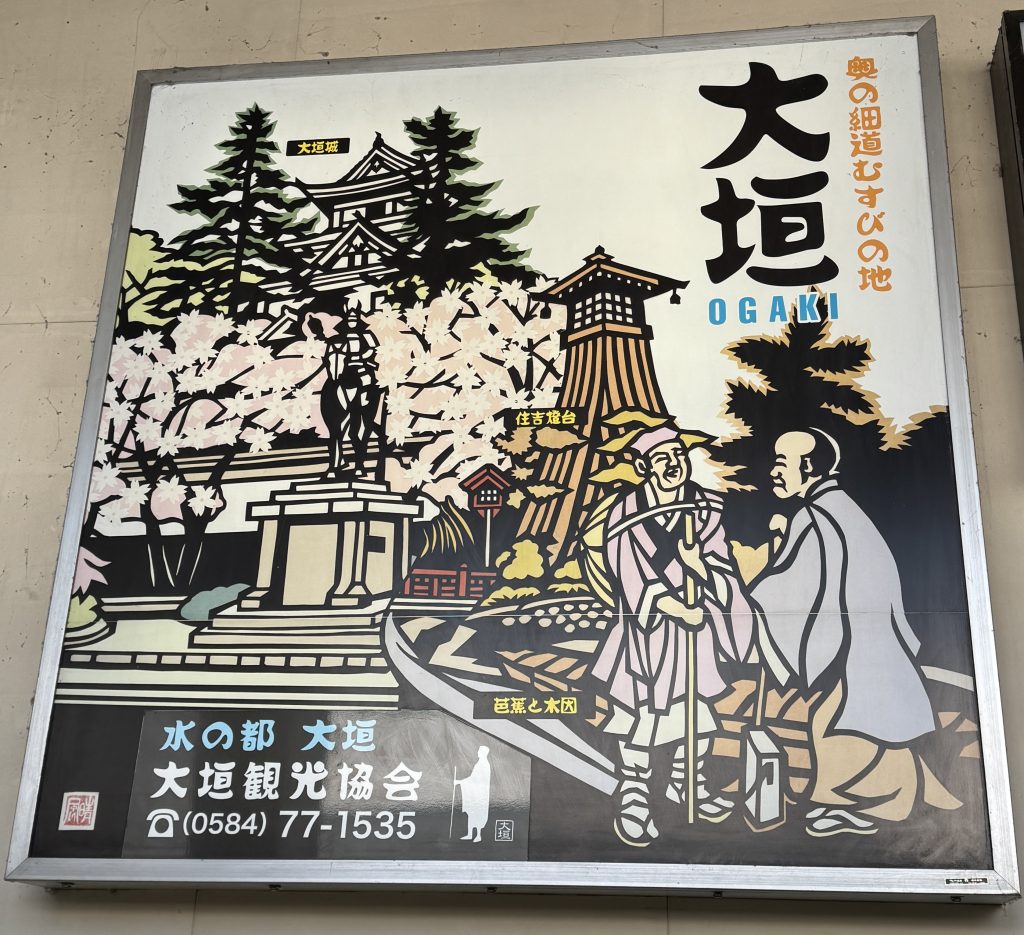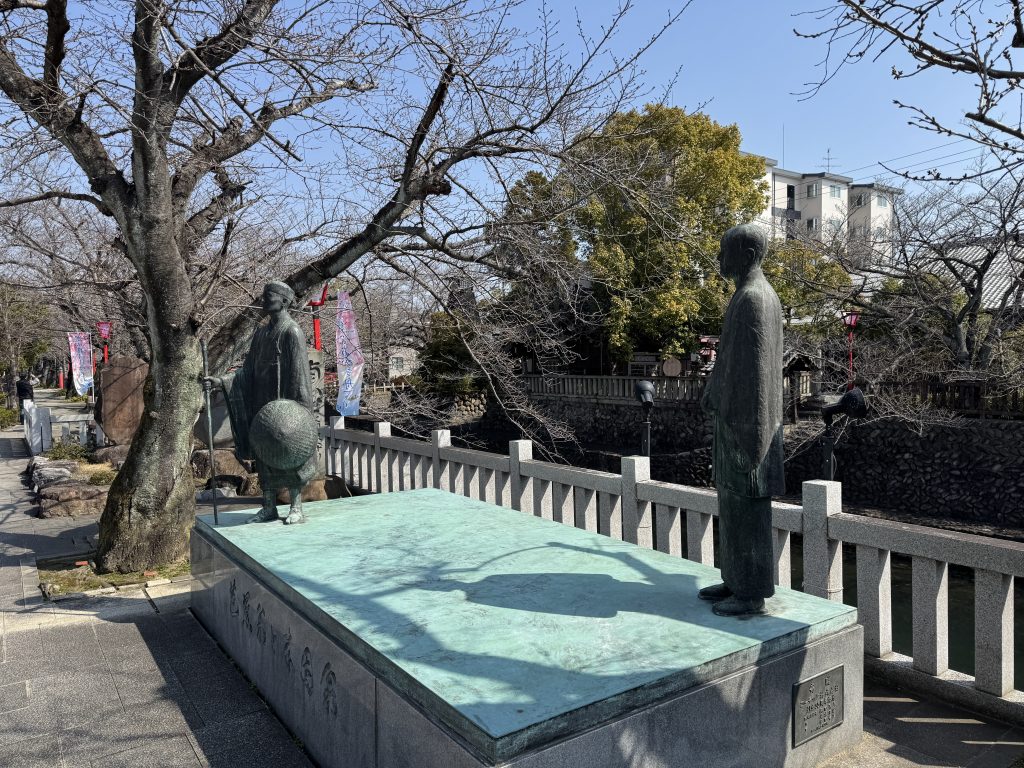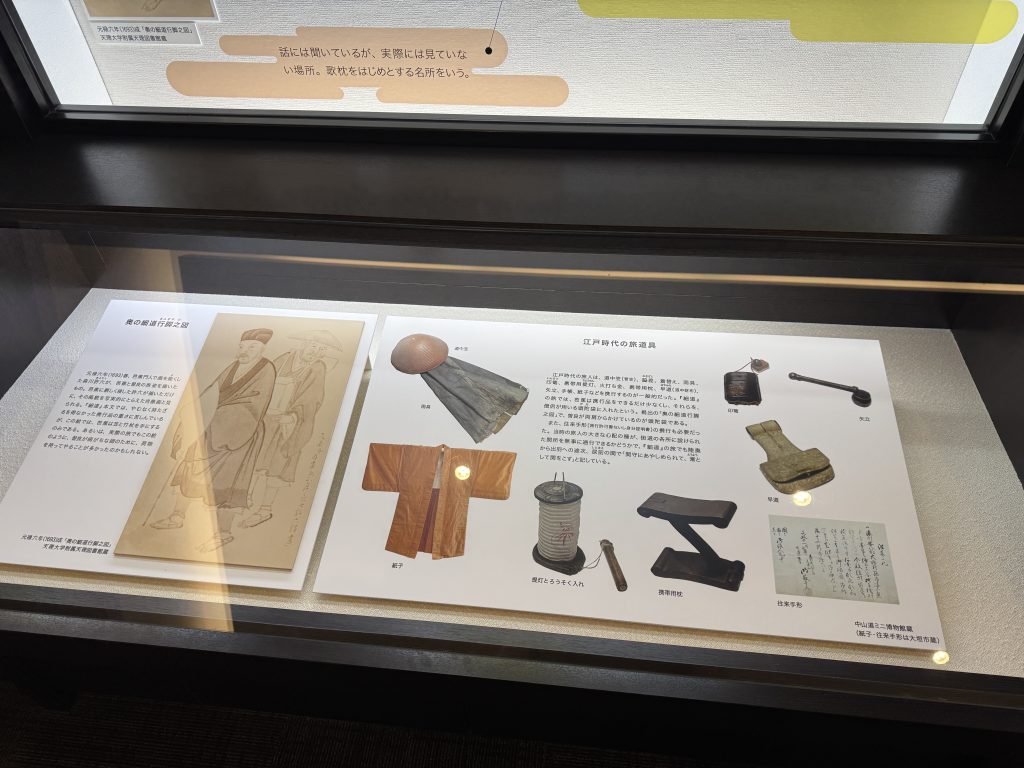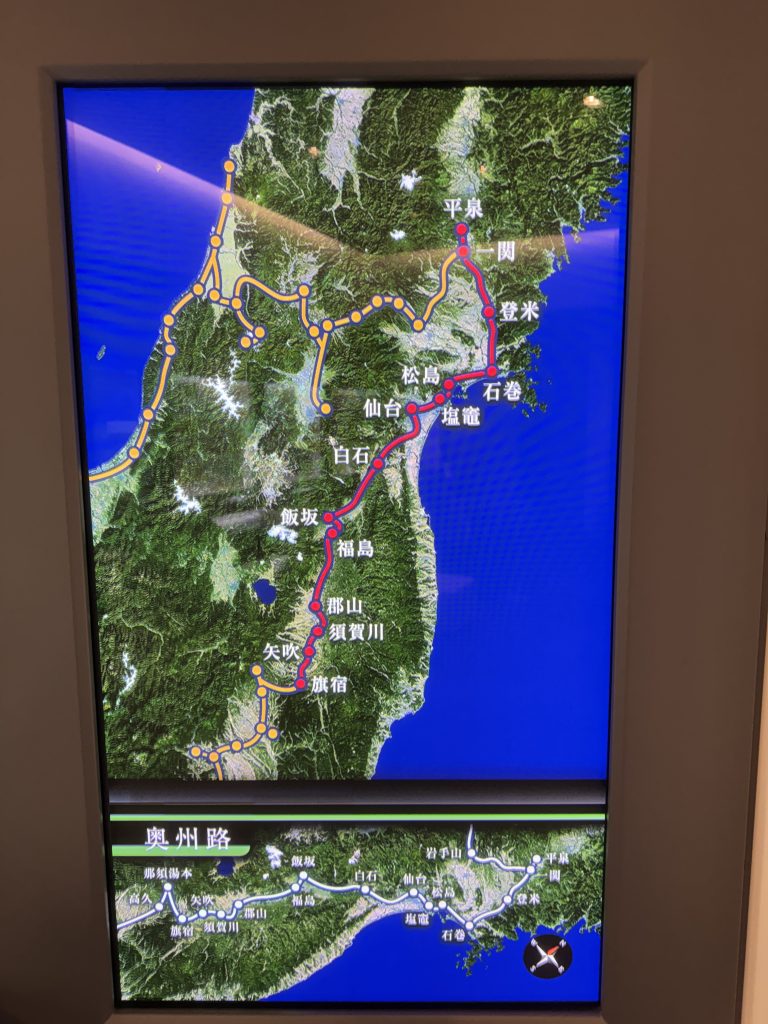
Summary
On Saturday, 22 March 2025, David traveled briefly to the Basho "Narrow Road to the Deep North" Museum in Ogaki, Gifu Prefecture
On our last full day in Japan, while the students did tourism or homework in Kyoto, I took myself to Ogaki, Gifu Prefecture, Japan to visit the Bashō Oku no Hosimichi [Narrow Road to the Deep North] Museum. We sent Mika back home at 4:40am. Sad to see her go, but hopefully to return soon.
Ogaki is about an ninety minutes east of Kyoto, and I took the Hida Limited Express there; I had had to purchase unreserved tickets, so it was standing room all the way. I am not sure where all the Chinese, Italian, and French tourists were headed (perhaps the Studio Ghibli Park near Nagoya?), but not too many of us got off at Ogaki.
Ogaki is a typical mixed agricultural/industrial/administrative town in mid-Japan. It looks a little beat up in parts, like there have been better days. The United States flattened part of the town during World War II. During the Edo Period, it had served as a vital river port, and of course was Matsuo Bashō’s home town. His family was on the lower end of the samurai class, and his father had served as a fire warden, a position to which Bashō could have aspired except his father died when his son was young and Bashō did not find a post that worked out for him. So, to remain a writer, he derogated himself and became a (wandering) monk.
I arrived at 9:40 and had a return train at 12:21, so I forced marched myself to the museum. The center of town has spiffier buildings (although I did pass a pretty nice-looking barbershop (Hair Salon Takahashi) that I would have loved to have tried). The Museum is at the bottom end of a long corridor of cultural redevelopment, encompassing parks, a new town hall, a space for a farmers’ market, and a restored river wharf (where you can get a boat ride!).

The museum itself is small and well done, and is in a community center that has a children’ area, a display of local delicacies and crafts for sale, and a café. Some kids were watching a demonstration of a model railroad when I arrived. It introduces Bashō’s life and then takes the viewer on the journey of the Narrow Road to the Deep North.

They have a 3D introductory video, too. Frustratingly, the Museum has a Google Map of Bashō’s exact route, a path which my Presidential Fellow Bryce Merry has tried to recreate over the past year or so, but the museum folks indicated that it is proprietary…we’ll see what we might be able to do about that…now that I know the focus of the museum, I will get in touch with its directors.

All done, I force marched back to the train station, grabbing a sandwich along the way. I traveled back to Kyoto on a local train to Maibara, and then from Maibara to Kyoto by shinkansen.
I was in my room at 2:38pm! We used the rest of the day to shop, explore, and prepare for our return journey.
